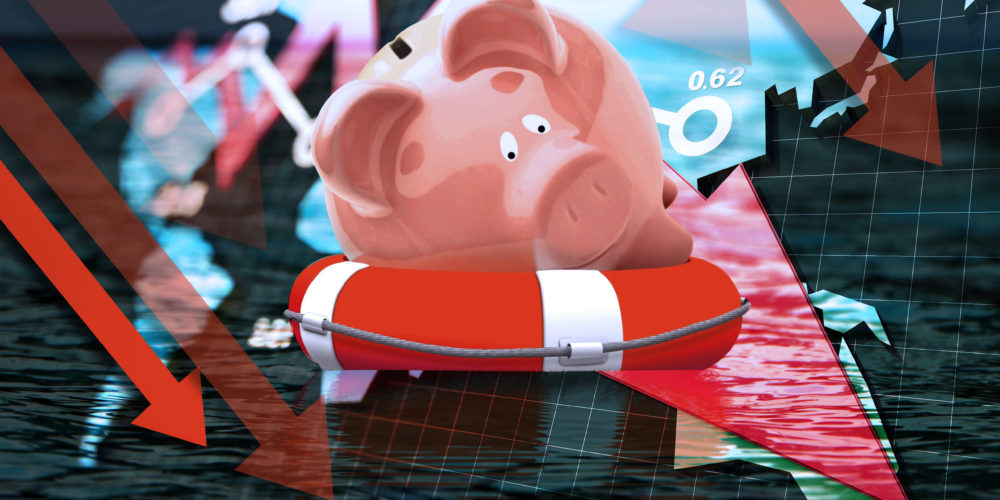The economist John Smith of the University of Sheffield caused a lot of debate with his recent article “Why coronavirus could spark a capitalist supernova,” in which he offered a powerful rejection of mainstream and Keynesian analysis of the bond market.
For years now, “core” capitalist economies have been suffering from a chronic lack of growth in private investment. Investors prefer to buy government bonds than to invest in new production, which suppresses their interest rates. Keynesians think that, while at first glance unfortunate, this nevertheless indicates a golden opportunity for states to borrow and invest for little or no repayment cost—doing what the private sector will not do and creating a new economic boom.
Smith rejects this emphatically. He says that low and falling interest rates on government debt point to a “supernova” in the making—not an opportunity but a portent of catastrophe.
His analysis focuses on what happens after the investors buy the bonds. Rather than holding them to term (to be repaid the principal plus the interest), they make a fortune by selling the bonds in the secondary market.
Because it is assumed that economic growth rates (and inflation) will continue to decline in future years and decades, it is also assumed that bond yields will continue to fall. Were a bond to be bought with a 2 per cent interest rate this year, it will be worth a lot more next year to sell that bond in the secondary market, because it is anticipated that bond yields with a 2 per cent interest rate will not be available to buy in the primary market in the future.
Market indicators show that investors expect the United States to join some EU countries and Japan in issuing negatively yielding bonds later this year, resulting from anticipated outright price deflation. The logic still holds: even with a negative interest rate you can still make the capital gains if it is anticipated that the rate will go even more negative in the future.
But, Smith points out, if for any reason the interest rate on government bonds begins to rise meaningfully for a sustained period, the enormous capital gains that investors make on projected falling interest rates will turn into huge capital losses, resulting in fire sales that would collapse the price of the bonds and send their interest rates soaring.
This would be a real catastrophe, because of the much higher borrowing costs that would result throughout an economic system that is increasingly kept functioning by the availability of cheap credit. Exchange value is created in the production of commodities and realised in sales, but the availability of cheap credit can keep an economy going for some time in the temporary absence of sufficient revenue.
Lending weight to Smith’s argument are the events of the 9th of March, when, alongside stocks and gold, US government bonds were indeed sold in a fire sale for the first time, causing their associated interest rates to shoot up. The financial system was only saved when the US Federal Reserve extended credit to anyone who urgently needed cash, and the fire sale halted.
During that period, when investors scrambled to sell their bonds, stocks, and gold, they only wanted to buy one thing: US dollars. The increasing importance of the US dollar has been discussed in various recent economic theories, with names like the “dollar milkshake theory” and the “dollar wrecking-ball theory”—all making the point that the dollar is no longer simply the world reserve currency but is actually a “dollar standard,” which performs an equivalent role to the “gold standards” of earlier decades—directing and regulating the world’s capital flows.
Since then the exchange rates of the currencies of Turkey, Mexico, Brazil, Russia, India and others have come under pressure because of a lack of availability of dollars to cover dollar-denominated debts and funding requirements—most of which are held by the private sector.
In my view, the fundamental reason that the developments in the bond market represent a “supernova” is to be found in the difference between a liquidity crisis and a solvency crisis. In the former you have a cash-flow issue, which the central bank can help by issuing credit (as the US Federal Reserve did in March, ending the fire sale in bonds), but in the latter it is not a matter of a cash-flow problem: you simply no longer have any means of servicing debt repayments, because your revenue is insufficient to continue operating and you already have debts that you cannot hope to service.
The unfolding depression has caused a collapse in both primary commodity prices and incomes from the sale of manufactured commodities, badly hitting the earnings of companies in scores of countries that depend on dollars for purchases of capital equipment and debt repayments.
The extension of further US dollars in credit cannot help the weaker layers of borrowers who are now facing insolvency, rather than illiquidity. In the absence of a general recovery of capitalist profitability it follows that one after another these weaker corporates will cease to exist, further strengthening the dollar, causing a cascade of balance of payments crises and thus deepening the global slump.
If this comes to pass, the events of the 9th of March will be repeated many more times until the injection of fresh credit into the global financial system will finally be ineffective in stopping the rush for the exits.






